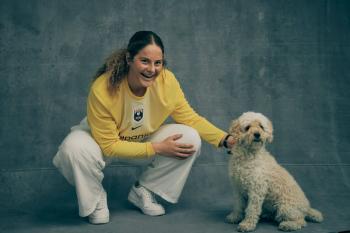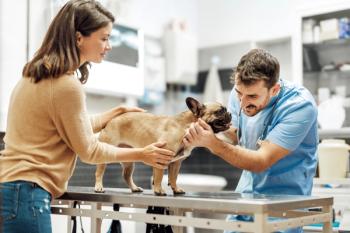
The skinny on fat pets
It's the elephant in the room. We all know pets are getting fatter, but just how fat? Until now, there was no concrete data.
Last year Dr. Ernie Ward, founder of the Association for Pet Obesity Prevention, set out to gather the largest set of real-world data about pet obesity in the United States. His goal was to determine more accurately the exact number of pets that are overweight or obese. Dr. Ward, a Veterinary Economics Editorial Advisory Board member, asked colleagues to record weight information on every cat and dog they saw for a regular exam on Oct. 17, 2007. Veterinarians participating in the study gathered each pet's name, age, breed, weight, body condition score, length, waist, and thoracic measurements. They also recorded known medical conditions, the total number of pets in the household, and the owner's assessment of the pet's weight. Almost 100 veterinary practices, universities, and private organizations participated.
Illustration by Marci Roth
The result? The study showed that 43 percent of participating dogs and 53 percent of participating cats were overweight or obese. And after analyzing the numbers, it became apparent that breed-standard weights are shifting. Dr. Ward found that the average weight for most of the American Kennel Club's top 10 breeds has increased by at least 1 pound with no marked increase in the pet's length. Another surprising result was an apparent tendency by the veterinary team to report pets' body condition scores inaccurately. Based on breed standards and pets' body dimension, 10 percent of participating dogs and 13 percent of cats were assigned a body condition score of 3 (normal) when they should have received a 4 or 5 (overweight or obese). Read on for more about the study results.
Dog and cat weight ranges
Talking to clients about obesity
First of all, show your support. If you understand your client's difficulties firsthand because of your own overweight pet, share your struggles. Make eye contact, nod, and repeat what the client says to show you understand. Involve him or her by using phrases such as, "Does that sound right to you?" or "Is there anything I left out?" When you create your treatment plan, keep in mind the client's preferences, abilities, and readiness for change.
What clients pay and what clients say about obesity
Average dog and cat breed weights
Newsletter
From exam room tips to practice management insights, get trusted veterinary news delivered straight to your inbox—subscribe to dvm360.




